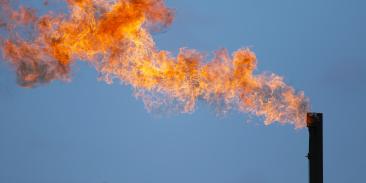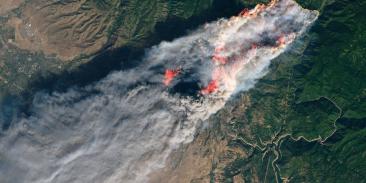Environmental Defense Blasts Snowmobile Pollution Standards
(13 September, 2002 — Colorado) The U.S. Environmental Protection Agency (EPA) is expected to issue new emission standards later today for “nonroad” recreational and industrial engines including snowmobiles, all-terrain vehicles, off-highway motorcycles, and recreational diesel-powered boats. Environmental Defense expects the standards for snowmobiles, which are responsible for hundreds of thousands of tons of harmful pollutants each year, will fail to protect human health and the environment, and fail to meet clean technology requirements established by the federal Clean Air Act.
“Unfortunately, the EPA is moving forward with emission standards for snowmobiles that are a snow job,” said Environmental Defense senior attorney Vickie Patton. “EPA is squandering an important and highly cost-effective opportunity to cut pollution from these very dirty engines. The result is bad public policy that violates EPA’s duty under the Clean Air Act to establish rigorous clean air standards.”
EPA is expected to rollback already weak emission standards proposed last year, due to pressure from the snowmobile industry. Last year, EPA proposed a 30% emission reduction in hydrocarbon and carbon monoxide emissions to be by 2006 and a 50% reduction by 2010. Current four-stroke snowmobile engines are already able to achieve substantially greater emission reductions than the new standards require, and a modified 2-stroke engine developed by students at Colorado State University reduces hydrocarbons by 88% and carbon monoxide by 99%.
The “nonroad” recreational vehicles and industrial engines that are the subject of the new emission standards due today have never before been subject to regulation under the federal Clean Air Act. According to EPA, each year pollution from these engines produce about 4.9 million tons of carbon monoxide, nearly 1 million tons of hydrocarbons, 340,000 tons of nitrogen oxides, and 8 thousand tons of particulates. This reflects about 13% of the hydrocarbon emissions from all mobile sources and about 6% of the mobile source carbon monoxide emissions. Further, according to the California Air Resources Board, today’s typical 2-stroke snowmobile engine produces as much harmful pollution in seven hours as a passenger car driven for 100,000 miles. Earlier this year, the Bush Administration reversed the Clinton Administration’s ban on snowmobiles in Yellowstone and Grand Teton National Parks.
Extensive background information on the snowmobile controversy is available on Environmental Defense’s website: www.environmentaldefense.org/article.cfm?contentid=2210
With more than 3 million members, Environmental Defense Fund creates transformational solutions to the most serious environmental problems. To do so, EDF links science, economics, law, and innovative private-sector partnerships to turn solutions into action. edf.org
Latest press releases
-
EU Methane Regulation Emerges As Strategic Tool For Energy Security
December 10, 2025 -
Court Strikes Down Trump Administration’s Reckless Wind Energy Permitting Ban
December 8, 2025 -
Court Orders Trump Administration to Release Records of Secret Group That Wrote Report Attacking Climate Science
December 8, 2025 -
COMING SOON: An effort to weaken our popular chemical safety law
December 8, 2025 -
Groups File Lawsuit Challenging Trump EPA Final Rule That Delays Methane Pollution Protections from Oil and Gas Industry
December 4, 2025 -
New Statewide Survey: As Electricity Demand and Costs Skyrocket, Arizonans Support Building More Wind and Solar Energy
December 4, 2025










